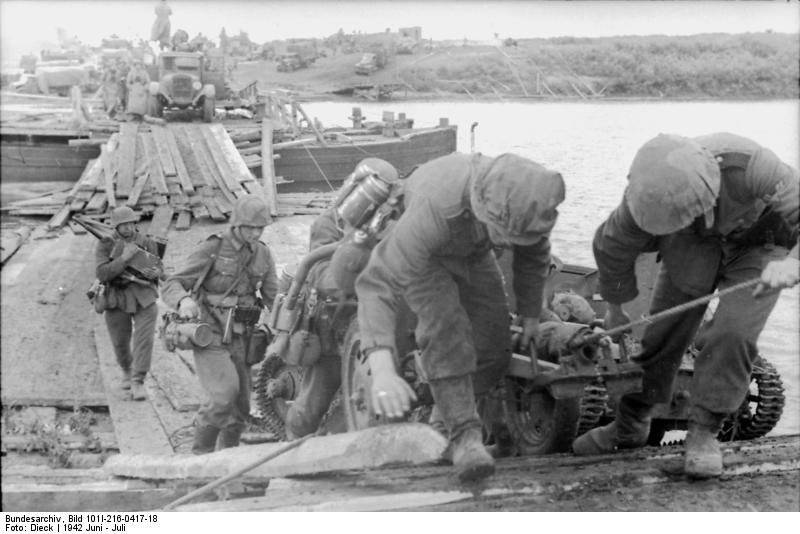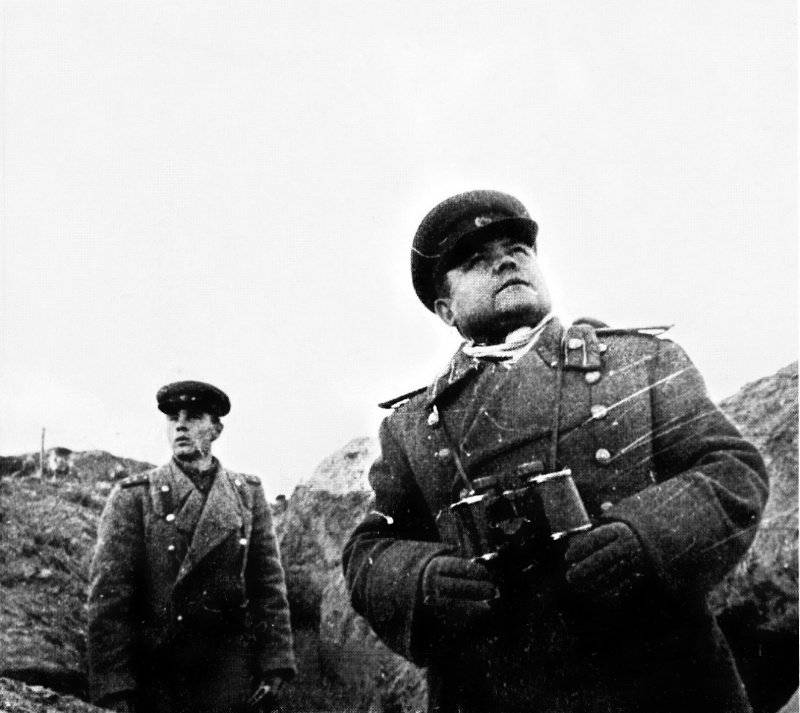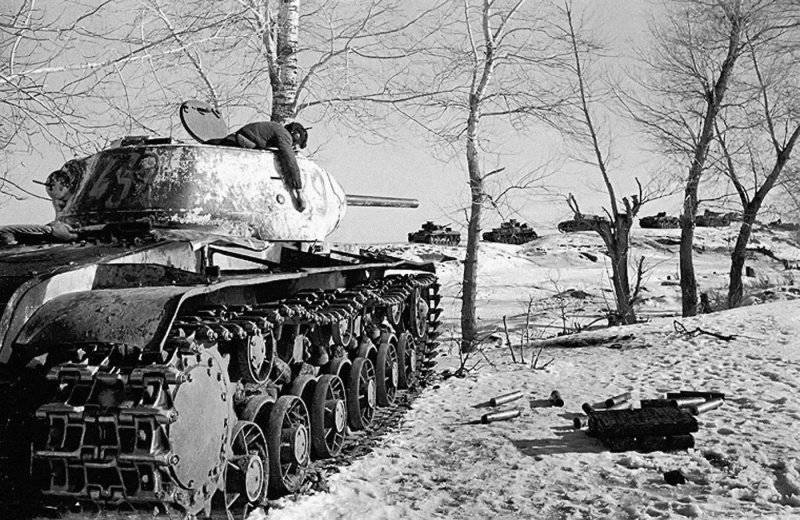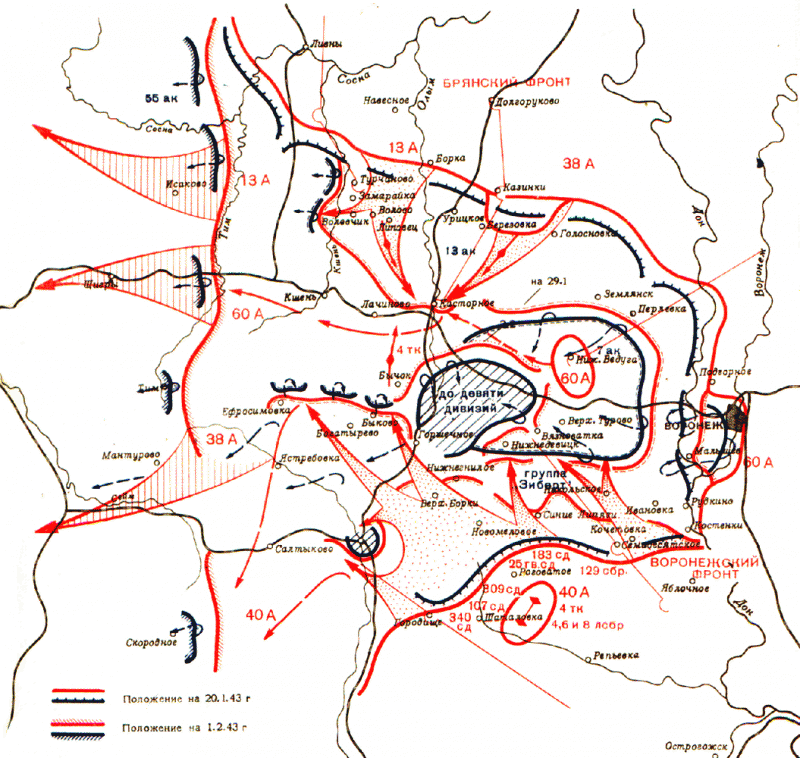Little-known pages from the history of the war. Battle of Voronezh

Summer 1942 of the year - the most formidable and most alarming summer of war. Most of our citizens know it because the fate of the country was being decided at that time. The famous Stalingrad battle began, but for some reason, not many people know that there was another battle, the importance of which is still not fully appreciated so far - this is the battle for Voronezh. For some reason, our well-known commanders sometimes only casually mentioned her in their memoirs and no more than that, the battles for Voronezh and our historians do not particularly appreciate their attention, probably due to the fact that the attack of the enemy in this direction was a complete surprise for the Headquarters The Supreme Command, which assumed that, as in the previous year, the summer offensive would unfold on the Central Front in the direction of Moscow.
And as a result, everything happened the other way around, at the end of June, the enemy delivered his main blow right at the junction of the two Soviet fronts of Bryansk and the Southwest, the von Weichs army group launched an attack on Voronezh with the forces of the German 2nd Army, the Hungarian 2nd Army and 4th tank army. At the same time, the 4th Panzer Army of Gotha acted as the main striking force of the group. The operation, codenamed “Blau”, was commanded by Field Marshal von Weichs. Voronezh was the main turning point of the German formations to the south, as well as the main base, with the help of which it was supposed to provide flank cover for the main strategic direction of the entire military company in 1942 in the direction of Stalingrad.
From the first day of the offensive and throughout the first week of German aviation daily, massive raids were carried out directly on Voronezh itself, according to the accounts of eyewitnesses who survived all this horror, they bombed the city with devilish accuracy and this is not surprising, because Lipetsk was nearby, where in the late 20s future commanders of the Luftwaffe comprehended military aviation science, so this area was very familiar to them without topographic maps.
As a result, at the end of the first week of the offensive, the Germans reached the Don River by July 6. Due to the fact that the main bridge over the Don in the Semiluk area was not blown up by someone's negligence in time, the Germans forced the main water barrier without any difficulty and broke into the streets of the city. The defense of Voronezh at the initial stage of street battles against such an armada at that time had mainly fighters of several regiments and individual battalions of the NKVD troops, as well as local civilian militiamen, on the outskirts of the city also defended units of the 232 SD, which stretched their defenses along the front almost on 80 km. Nevertheless, the city did not surrender. Fierce street battles unfolded on its streets, separate parts of the Southwestern Front continued to be drawn into battle on the streets of the city, as well as reserves hurriedly thrown into battle directly from the wheels.
Understanding the seriousness of the situation, the Soviet command nevertheless managed to pull up to Voronezh part of the retreating 40 army, 60 army, 5 tank army and the newly formed tank corps. Heavy tank battles took place on the outskirts of the city, where, faced with the best infantry and tank units of the enemy, our units suffered heavy losses and, as a result, the massive counter-offensive operations of the Red Army were unsuccessful, alas. The scores of the cars shot down on both sides went by many hundreds, the intensity of the battles reached such bitterness that not only soldiers but also generals with the rank of commanders died in battles. Nevertheless, our troops still managed to hold the rokadnoe highway to Moscow. Here's how the English historian J. Fuller wrote about these dramatic days: “The battle for Voronezh began, and, as we will see, for the Germans it was one of the most fatal during the war. The Russians, concentrated ... north of Voronezh, arrived in time to save the situation, perhaps they saved the entire campaign. There is no doubt that this was the case. ”
Who had to be in Voronezh, he probably knows that most of the city, the so-called right bank, lies between the Don and Voronezh rivers, and its smaller part, the so-called left bank, is on the left bank of the Voronezh river. At that time, according to various data, at least half remained in the city, which is about 200 thousand of its inhabitants, that is, thousands of civilians were essentially on the front line, where fierce street battles took place. A few days later, most of the right bank (main) part of the city came under the control of the German troops. The only exception was the northern town of the agricultural institute, where the multi-day battles were simply terrifying, for the most part, turning into hand-to-hand combat for each house. Bridges across the Voronezh River were blown up (except for the railway), along the remaining supports of this bridge, to the right bank, the northern part of the city, for the remaining bridgehead in the hands of our troops, reinforcements and ammunition were constantly being transferred. Our main units and subdivisions entrenched in the left-bank part of the city. However, on July 7, the commander of the German group, von Weichs, announced to his soldiers the final seizure of Voronezh, but this was far from the case, it was only the beginning of the battle for Voronezh. On the same day, the Voronezh Front was formed. The Soviet Information Bureau for several weeks did not dare to inform the country of the terrible truth about the city beating for life and death, replacing it with the streamlined words "... hard fighting in the Voronezh region."
Not everything was well with the information of the Germans, so the commander of Army Group South, von Bock, reported to Hitler about the complete capture of the city, but this information turned out to be incorrect and did not correspond to the actual state of affairs, as a result of the battles for Voronezh affected the fate of von Boc himself, he was later removed from the command of Army Group South (the official wording was due to illness) and sent to the Fuhrer reserve.
The German command tried to further develop its success, that is, to capture the whole city, once the Nazis even managed to cross over to the left bank of Voronezh south of the city, but as they moved towards the center, their units were attacked by our fighter battalion and as a result were completely destroyed, more attempts to capture the Germans did not undertake the left-bank part of the city, but only thought about one thing how to hold their positions.

Commander of the Voronezh Front, Colonel-General N.F. Vatutin at the observation post
We all know about the Nevsky Piglet during the defense of Leningrad, but few know that there was a Nevsky Piglet and in Voronezh - this is the Chizhovsky bridgehead, in late August and September 1942, the Red Army command attempted to secure a bridgehead on the right bank of Voronezh. Not the first time, but our troops succeeded. The Chizhovsky bridgehead, nicknamed by the soldiers as “the valley of death”, began from the flood meadows of the right bank and climbed the steep coastal hills of the southern part of the city. To get to the bridgehead, the troops needed to force the Voronezh River, to force the river, Soviet military engineers invented and used an underwater crossing, the fighters at night constructed this crossing from concrete fragments and broken bricks, covered with water and invisible from the air for half a meter. On one of the nights, equipment and infantry were transferred to the right bank, as a result of a sudden strike, a bridgehead was seized in the right-bank part of the city, which, despite repeated attempts by the enemy to drop our troops, continued to remain with our fighters. The battle on Chizhovka did not stop until the liberation of the city, how many of our soldiers died there, it’s just unknown, still more people are still found in these places, now more than 15 people are buried in a mass grave on the Chizhov bridgehead, but only 000 surnames are known person. This is the largest burial of the Great Patriotic War in Voronezh. It was from Chizhovka that one of the main attacks on the enemy troops was inflicted upon the liberation of the city in January 3545.
As a result, in the course of the unceasing bloody battles in the Voronezh sector, a huge enemy grouping, which the Germans failed to use at Stalingrad, was shackled by the battles. The seriousness of this section of the front for the Germans is also indicated by the fact that at the height of the fighting in Voronezh they had transferred a division even from near Stalingrad. The battle for Voronezh has created all the conditions and prerequisites for the victory of our troops at Stalingrad.
In the autumn of 1942, a protrusion formed in Voronezh’s enemy defense, a kind of “Voronezh Arc”, about 100 kilometers in depth with a base length of about 130 kilometers. The 10 of the German 2 Divisions and the Hungarian 2 divisions were located inside this projection. The Soviet High Command decided to strike the flanks of this projection. Voronezh-Kastornoy operation began on 24 on January 1943, as a result of this operation on January 25, all areas of the city occupied by the Germans were completely liberated, and throughout the entire Voronezh sector, the entire enemy group was completely surrounded, the so-called Stalingrad on the upper Don. Fierce fighting continued until February 17. The enemy tried to break through the encirclement, but was crushed. The enemy lost up to 11 divisions (German 9 and Hungarian 2), almost all heavy weapons and equipment. The defeat of the Nazi troops near Voronezh during the Voronezh-Kastornoy operation rightfully allows us to speak of it as a major success of the Soviet troops in the 1943 year.

After battle. The Soviet tank KV-1C (high-speed) and its dead tankman who shot the German tank column. Voronezh Front
The city of Voronezh itself turned out to be the third, after Leningrad and Sevastopol, by the length of stay on the front line, 212 days and nights the front line passed directly through the city. During the entire war there were only two cities - Stalingrad and Voronezh, where the front line passed through the city itself. Voronezh was included in the number of 12 cities in Europe that were most affected in the Second World War and in the number of 15 cities in the USSR requiring immediate restoration, up to a total of 95% of all city buildings were destroyed.
Voronezh and our enemies, especially the Hungarians, remembered for a long time, they almost lost their entire most efficient army near Voronezh, and the German divisions 26, the Hungarian 2s (completely) and the Italian 8s, as well as the Romanian units were destroyed in the Voronezh area. . The number of prisoners was more than at Stalingrad, the total number of captured enemy soldiers taken in the area of the Voronezh Front was about 75 000 soldiers and officers.
At the same time, according to various sources, the losses of the German troops and their allies amounted to 320 thousands of soldiers and officers. Our army has lost even more, in the battles on the Voronezh land about 400 000 Soviet soldiers were killed.
In the years when the country began to mark its cities with the special title “Hero City”, then Voronezh leaders had submitted documents for assigning this honorary title to Voronezh. But, unfortunately, this initiative did not find the initiative from the Moscow leaders, limited only by awarding the city with the Order of the Patriotic War, I degree.
16 February 2008 of the year for the heroism shown by the city’s defenders during the occupation by German troops, which did not allow them to completely capture one of the main centers of the country, the city was awarded the honorary title of the Russian Federation “City of Military Glory”, and Voronezh stands modestly among the cities of military glory, the city never became a Hero City.
PS
“Due to the fact that the main bridge over the Don in the Semiluk region was not blown up by someone’s negligence in time, the Germans forced the main water barrier without difficulty and broke into the streets of the city.”

Information